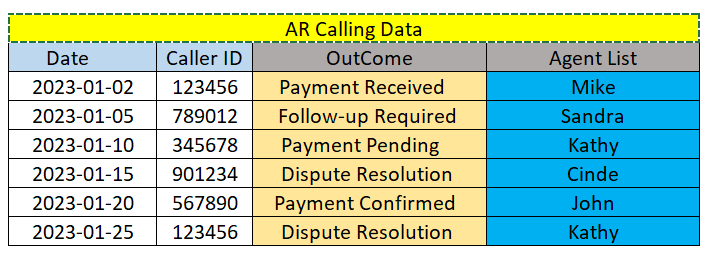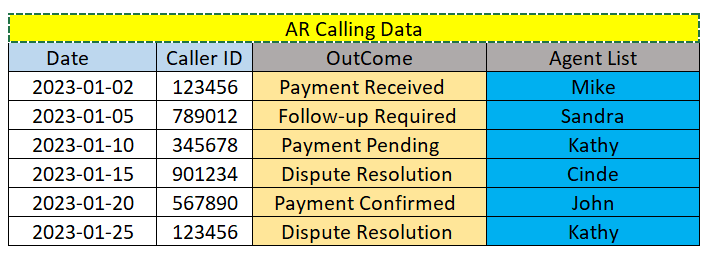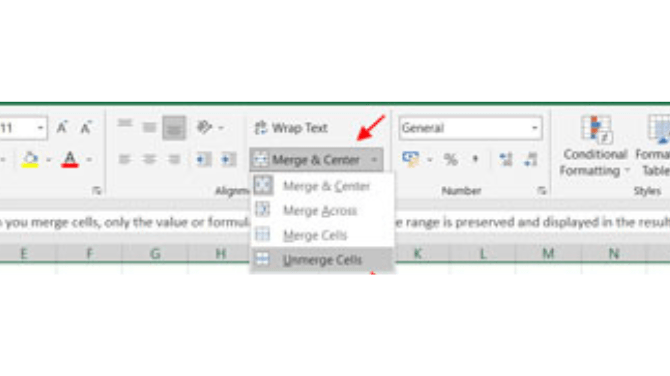Microsoft Excel, a powerhouse in the realm of spreadsheet software, provides users with a myriad of tools to organize and present data effectively. One such tool that plays a crucial role in enhancing the visual appeal and structure of Excel sheets is the "Merge Cells" feature. In this article, we will delve into the ins and outs of merging cells in Excel, exploring basic steps, advanced techniques, common mistakes to avoid, and the impact on collaborative work.
I. Introduction
A. Brief Overview of Excel and Its Functionalities
Microsoft Excel, part of the Microsoft Office suite, is a versatile spreadsheet software widely used for data analysis, calculations, and reporting. Its user-friendly interface and robust features make it a go-to tool for professionals across various industries.
B. Importance of Merging Cells in Excel
While Excel offers a multitude of features, merging cells stands out as a simple yet effective way to enhance the presentation of data. Whether you're creating a financial report, a project timeline, or a simple to-do list, merging cells can contribute to a cleaner and more organized layout.
How to Merge Cells in Excel
II. Basic Steps to Merge Cells
A. Locating the Merge Cells Option
To merge cells in Excel, begin by selecting the target cells. Next, navigate to the "Home" tab on the ribbon, where you'll find the "Merge & Center" option in the "Alignment" group. Click on the small arrow next to it to reveal additional merging options.

B. Selecting the Cells to Be Merged
Once you've located the merge options, select the cells you want to merge. Excel allows you to merge cells across rows, columns, or both, providing flexibility in formatting your spreadsheet.

C. Executing the Merge Operation
After selecting the desired cells, click on the appropriate merge option. Excel will merge the selected cells, combining their content into a single cell while retaining the content of the upper-left cell.

III. Merging Across Rows and Columns
A. Merging Cells in a Single Row
Merging cells in a single row is useful when you want to create a header or emphasize a specific section. By merging cells horizontally, you create a visually cohesive element.
B. Merging Cells in a Single Column
Similarly, merging cells in a single column allows you to create a vertical emphasis, ideal for categorizing data or highlighting a specific category.
C. Merging Cells Across Both Rows and Columns
For more complex layouts, consider merging cells both horizontally and vertically. This versatile approach can be instrumental in crafting intricate designs within your spreadsheet.
IV. Centering and Formatting Merged Cells
A. Aligning Text Within Merged Cells
After merging cells, ensure proper text alignment for a polished look. Experiment with horizontal and vertical alignment options to find the layout that best suits your data.


B. Adjusting Cell Formatting Post-Merge
Excel provides formatting options even after cells are merged. Fine-tune the appearance by adjusting font size, color, and borders to achieve a professional and visually appealing result.
V. Handling Merged Cells with Data
A. Potential Challenges When Merging Cells with Data
Merging cells with existing data can pose challenges, especially when it comes to preserving the integrity of the information. It's crucial to be aware of potential issues that may arise.
B. Solutions to Overcome Data-Related Issues
To mitigate data-related challenges, consider solutions such as unmerging cells, adjusting cell size, or using alternative formatting options. Always prioritize the accuracy and clarity of your data.
VI. Unmerging Cells
A. Steps to Unmerge Cells in Excel
Unmerging cells is a straightforward process. Select the merged cell, navigate to the "Home" tab, click the "Merge & Center" dropdown, and choose the "Unmerge Cells" option. This is particularly useful when modifications or updates are necessary.

B. When to Consider Unmerging Cells
While merged cells offer visual appeal, there are instances where unmerging cells becomes necessary. Evaluate the needs of your spreadsheet to determine when to retain or undo the merge operation.
VII. Best Practices for Merging Cells
A. Avoiding Excessive Merging
While merging cells can improve aesthetics, excessive use can lead to a cluttered appearance. Use merging judiciously to maintain a clean and organized spreadsheet.
B. Using Merged Cells for Visual Enhancements
Strategically merging cells can be a powerful tool for visual hierarchy. Use merged cells to create headings, subheadings, or delineate sections for better readability.
C. Considering Alternative Formatting Options
While merge cells is a handy feature, explore alternative formatting options such as borders, shading, and colors. Finding the right balance ensures a visually appealing and well-structured spreadsheet.
VIII. Common Mistakes to Avoid
A. Merging Non-Contiguous Cells
Avoid the mistake of merging non-contiguous cells. Merging cells that are not adjacent can lead to unexpected results and may disrupt the intended layout of your spreadsheet.
B. Impact of Merged Cells on Formulas
Understand the implications of merged cells on formulas. In some cases, merged cells may interfere with calculations, affecting the accuracy of your data. Be cautious when working with formulas in merged areas.
IX. Advanced Techniques for Merging
A. Conditional Merging Based on Cell Values
Take your merging skills to the next level by exploring conditional merging. Use logical functions to merge cells based on specific criteria, automating the formatting process.
B. Merging Cells with Formulas
Combine the power of formulas with cell merging to create dynamic and data-driven layouts. This advanced technique allows you to showcase calculated results within merged cells.
X. Excel Tips and Tricks
A. Keyboard Shortcuts for Merging Cells
Efficiency in Excel is often synonymous with mastering keyboard shortcuts. When it comes to merging cells, utilizing these shortcuts can save time and streamline your workflow. Below are the essential keyboard shortcuts for merging cells:
- Merge Cells:
- Shortcut:
Alt + H + M + M - Action: This sequence of keys allows you to quickly merge selected cells. After selecting the cells, press
Alt, release it, and then pressH,M, andMsuccessively.
- Shortcut:
- Unmerge Cells:
- Shortcut:
Alt + H + M + U - Action: To unmerge previously merged cells, use this shortcut. After selecting the merged cell, press
Alt, release it, and then pressH,M, andUsuccessively.
- Shortcut:
B. Hidden Features in the Merge Cells Option
Explore hidden features within the merge cells option. Excel often conceals advanced functionalities that can add a layer of sophistication to your spreadsheet design.
XI. Merging Cells in Different Versions of Excel
A. Compatibility Issues and Solutions
If collaborating with others, be mindful of compatibility issues between different Excel versions. Ensure a seamless experience by adopting best practices that work across various versions.
XII. Collaborative Work and Merged Cells
A. Considerations for Shared Excel Documents
When collaborating on Excel documents, communication is key. Ensure all team members are aware of merged cell layouts to avoid confusion and maintain a consistent presentation.
B. Ensuring Consistency in Collaborative Projects
Establish guidelines for cell merging to maintain consistency across collaborative projects. Consistent formatting enhances clarity and ensures a cohesive look across all sheets.
XIII. Visual Appeal and Design
A. Enhancing Spreadsheet Aesthetics Through Merged Cells
Merged cells contribute significantly to the overall aesthetics of your spreadsheet. Experiment with different layouts to find a design that aligns with your project's visual theme.
B. Incorporating Merged Cells into Graphic Elements
Elevate your spreadsheet design by incorporating merged cells into graphic elements. Create visually appealing charts, diagrams, or callout boxes to convey information more effectively.
XIV. Conclusion
A. Recap of Key Points
In conclusion, merging cells in Excel is a versatile tool that goes beyond visual enhancement. It aids in creating well-organized, aesthetically pleasing spreadsheets that effectively convey information.
B. Encouraging Readers to Explore and Experiment
Encourage readers to explore the myriad possibilities of cell merging in Excel. Experiment with different layouts, discover advanced techniques, and leverage the power of merged cells to elevate their spreadsheet game.
FAQs
1. How to Merge Cells in Excel Without Losing Data?
-To merge cells without losing data:
-Select the cells you want to merge.
-Navigate to the "Home" tab.
-Click on the small arrow next to "Merge & Center" in the "Alignment" group.
-Choose "Merge & Center" or "Merge Across," depending on your preference.
This retains the data from the upper-left cell, and the content from other cells is placed in the respective upper-left cell of each selected range.
2. Can I merge cells with data in Excel?
Yes, you can merge cells with data, but be cautious to avoid data-related challenges. Consider the solutions mentioned in the article.
3. What are the keyboard shortcuts for merging cells?
Keyboard shortcuts for merging cells include Alt + H + M + M for merging and Alt + H + M + U for unmerging.
4. How can I unmerge cells in Excel?
To unmerge cells, select the merged cell, go to the "Home" tab, click the "Merge & Center" dropdown, and choose "Unmerge Cells."
5. Are there compatibility issues when merging cells in different Excel versions?
Yes, compatibility issues may arise between different Excel versions. It's essential to follow best practices for a seamless experience.
6. Where can I learn more about advanced Excel features?
Explore Microsoft's official documentation or attend online tutorials to dive deeper into advanced Excel features.


You must be logged in to post a comment.